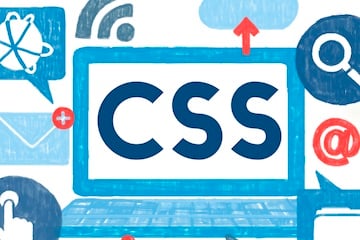Cascade leaves in style bring life to the web. CSS controls the apartment of HTML elements such as colors, fonts, layouts and animations. CSS, however, can quickly become a braided network of inflated and outdated styles and reducing the rules. The result is often a slower load time and complicated disorders.
Optimization of Fils CSS avoids these snapus.
Verification of CSS
Start by verifying the status of your CSS files.
- Browser tools. Open the site in Chrome or Firefox, right -click the page and select “Check”. Filter the “CSS” on the “Network” tab to see the size and time of the styles.
Pagespeed Insights identified speed optimization, such as this example for unused CSS.
Other tools can simplify the cleaning process.
- NejedCSS is a user -friendly tool that searches your site, identified unused CSS, and generated in a simplified version. Enter your URL and let the tool make a heavy lifting.
- Cleancss offers online CSS minifs and optimizer. It pulls out unnecessary spaces and comments and removes the reduction code, resulting in a slimmer styles template.
- CSS LINT does not directly remove unused CSS; It emphasizes inefficient and potential mistakes. Use it to determine where your CSS can be effective and improved.
For example, these unused styles for the old banner should be removed:
.banner { background: #f4f4f4; padding: 20px; }
.banner__title { font-size: 2em; }
Active styles remain:
.header { background: #fff; padding: 10px; }
.header__logo { height: 50px; }
Optimization of CSS
Once you have removed the unused code, the next step is to optimize what is left. Here are my go-to tactics.
- Minification removes unnecessary characters (eg gaps and comments) from your CSS and reduces the file size without the affitation function. Minify.org is my best tool.
- Multiple combined CSS files into one. Less HTTP requirements means quick loading times. However, if critical CSS is necessary immediately and uncritical CSS can be loaded later, consider them strategically divided.
- To accept the name of the Convention. Structured naming, such as BEM, helps avoid conflicts and redundancy and makes it easier and easier to optimize your CSS.
Slimmer css
How to lay down. Comments are useful for clarity, excessive, but outdated comments can frustrate your files. Continue to fall and update them as your code evolves.
/* This is a comment */
Responsive design. CSS Media questions adapt the content of the device resolution (size). However, consider writing more similar queries, consider mobile rats where you define basic styles and then add edits for larger screens.
/* Base styles for mobile devices */
.container {
padding: 10px;
font-size: 16px;
background-color: #f0f0f0;
}
/* Styles for tablets and larger screens */
@media (min-width: 768px) {
.container {
padding: 20px;
font-size: 18px;
background-color: #e0e0e0;
}
}
/* Styles for desktops */
@media (min-width: 769px) {
.container {
padding: 30px;
font-size: 20px;
background-color: #d0d0d0;
}
}
Access to CSS files
Traders can use CSS files in electronic trading platforms via a control panel or FTP customer.
Shopify. Edit CSS by logging into the administrator panel and navigating to Online store> Topicsand click Actions> Edit code On your active topic. In the code editor, find CSS files in the “Assets” folder (eg. component-discount.css, Theme.css). Edit files and save your changes and see how they are applied to the shop window.
Prestashop Topics usually store CSS files in the topic directory (often below /Topics/Your_Theme/Assets/CSS). Access and adjustment of the thesis using the FTP customer or through the built -in motif editor in the back office prestashop (if accessible). When you make changes, do not forget to clear the cache, so the updates are reflected on the live website.
Magento 2. CSS is part of the structure of your topic and is usually found in the directory App/Design/Frontend/(Supplier)/(Topic)/Web/CSS (gold .Less Files below Web/CSS/Source) In modules. It is best to create a children’s theme or rewrite CSS files of the default topic rather than directly edit basic files. Once you have made a change, run the static content deployment command (BIN/MAGENTTO Settings: Statical-Conteent: Deploy) And rinse the cache for the update application. Note that the static deployment of content will temporarily put the website into maintenance mode.
NetSuite suicommerce It usually stores CSS files in the topic folder. Adjust them through the local local development of the NetSuite gold cabinet. If you are using Sass or other preprocessor, make changes in the source files, compile them and put the updated assets on your site.
Wooocommerce’s CSS files usually live in Active WordPress. Edit your topic Style.css The file directly or best create a children’s theme that suppresses the default styles without the attractiveness of future updates. Alternatively add your own CSS via WordPress customization Look> to customize> additional CSS.
For other platforms, go to the documentation and find “CSS Asset Management” or something similar. In my experience, each platform provides instructions for need or change CSS.

